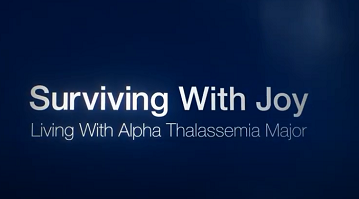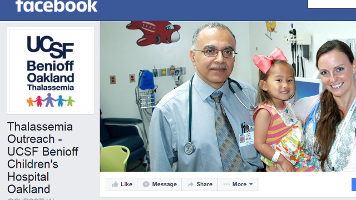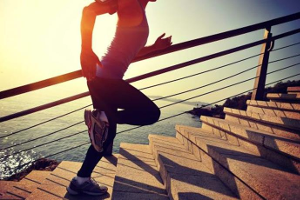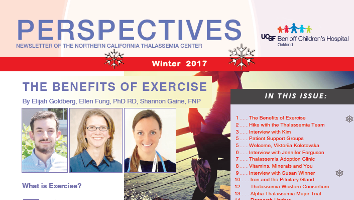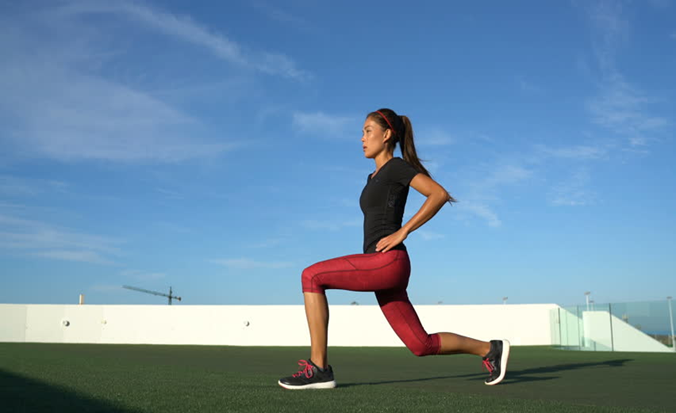
The Benefits of Exercise
by Elijah Goldberg, Ellen Fung PhD RD, Shannon Gaine, PNP
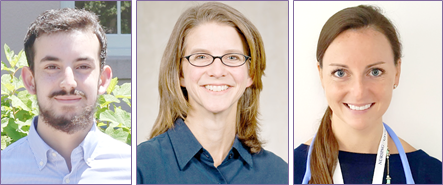
Children's Hospital Oakland Research Institute and Department of Hematology/Oncology, UCSF Benioff Children's Hospital Oakland
What is Exercise?
Exercise encompasses a variety of activities, many of which we engage in every day.
Activities can be categorized as weight bearing or aerobic, and by level of intensity: light, moderate, and vigorous. Light intensity exercises include gardening or slow walking, while moderate intensity exercises include brisk walking or water aerobics. Vigorous activities may include running, aerobic dance, or any other activity that increases your heart rate and causes you to sweat. Both light and moderate intensity exercise should be engaged in often, and sedentary, or non-active, behaviors should be minimized. These include watching TV, playing video games, or sitting at a computer for long hours. In the U.S. and around the world people are increasingly sedentary, paired with reduced physical activity.
Why is exercise important?
Exercise is a cornerstone to both physical and mental well-being. In individuals without chronic illness, exercise has been shown to provide a wide variety of benefits including: improved sleep, reduced stress, increased energy and stamina, body fat reduction, improved cardiovascular fitness, and reduced heart disease. These rewards lead to an increase in personal productivity, life span, and enable individuals to live more fulfilling, active lives. Studies in young children have demonstrated that exercise improves school performance, and reduces mental illness in adults.
For those with chronic illnesses, the benefits of exercise may also increase feelings of normalcy, improve quality of life, and significantly increase academic success. The overall advantages of physical activity stretch across the entirety of one’s life, and it can’t be stressed enough how important it is to get out there and exercise.
Why is exercise important for patients with Thalassemia?
 For patients with thalassemia, exercise could be viewed as an uphill battle. Studies have shown that patients with thalassemia engage in significantly less physical activity and spend more time on sedentary activities than healthy individuals. A busy lifestyle along with frequent hospital visits can reduce time to exercise. Some patients may also experience pain which is a physical barrier to exercise. Additionally, significant cardiac iron overload may further decrease exercise capacity. Finally, many patients experience fatigue, often close to the time of transfusion, which can affect the motivation to exercise.
For patients with thalassemia, exercise could be viewed as an uphill battle. Studies have shown that patients with thalassemia engage in significantly less physical activity and spend more time on sedentary activities than healthy individuals. A busy lifestyle along with frequent hospital visits can reduce time to exercise. Some patients may also experience pain which is a physical barrier to exercise. Additionally, significant cardiac iron overload may further decrease exercise capacity. Finally, many patients experience fatigue, often close to the time of transfusion, which can affect the motivation to exercise.
Individuals with thalassemia should not wait to exercise until they feel they have enough energy; regular exercise will create the energy to continue. The benefits of exercise may actually be greater in thalassemia as studies have shown patients have reduced muscle mass and are at higher risk for osteoporosis. Exercise can stimulate both muscle and bone growth and increase bone strength.
For regularly transfused patients who are able to exercise safely, exercise intensity may need to vary if fatigue is a factor. Hemoglobin has a direct impact on exercise capacity, and patients who have frequent fatigue may benefit from a maintaining a higher hemoglobin level.
How much exercise do you need?
For children and adolescents, the Center for Disease Control (CDC) recommends 60 minutes of physical activity per day. For adults, the CDC recommends a minimum of 150 minutes of moderate activity every week. Time spent engaging in physical activity should be split between aerobic, muscle strengthening, and bone strengthening activities. These recommendations for aerobic activity have been translated into the number of steps per day for children and adults. For adults, a minimum of 10,000 steps/day is recommended. Girls and boys need more: a minimum of 12,000 to 15,000 steps/day, respectively, for the same level of physical activity.
Guidelines like these are not always applicable for individuals with chronic illnesses; the extent to which physical activity can be performed should be determined on a case-by-case basis. For individuals experiencing severe pain or fatigue, or those with a history of fracture, consultation with your healthcare provider is recommended to reduce risk of injury.
How Can You Track Exercise Goals?
To ensure you are meeting your exercise goals, there many different types of activity monitors that can be used track your progress. Wrist worn activity monitors all have health applications that can track your daily steps and energy expenditure, monitor your heart rate, and allow you to set personal exercise goals,. If you choose to purchase a fitness tracker, it’s best to read up on which device suits your needs before buying. There are also free apps for your smartphone that can track your steps if you carry your phone with you throughout the day. Alternatively, you can simply record the amount of time you spend exercising every week.
Those who incorporate exercise into their daily routine and identify friends to keep them accountable to the routine will have greater success at making exercise a daily part of their life.
What can you do?
You should select daily activities or sports that you enjoy maximizing the likelihood of continued physical activity. Some exercises can be done from a sitting position; seated running, leg extensions or heel raises can all be performed in a chair. Another accessible type of physical activity is isometric exercise. Isometric activities are performed in a static position using muscle contractions to stay in the same position; examples include the plank or wall squats. Isometric exercises improve muscle tone, can be performed in the comforts of your home, and don’t require fancy weight equipment. Your local club is also a great resource for recreational classes of all types (e.g. swimming, ballet, basketball). For adults, joining a gym or taking a yoga or dance class can be a fun way to engage in physical activity. For kids, daily participation in P.E. and after school sports is encouraged.
Wherever you decide to exercise, doing so with a group, family, or friends can promote adherence to physical activity and add to the fun!
Summary

- Exercise is important.
- Frequently engage in light and moderate intensity activities; these have numerous benefits for individuals with thalassemia.
- Experiment with exercise, and find activities that work for you.
- Make exercise a priority in your life; you will be rewarded through a healthier body and a happier mind.
- If you have questions about exercise, ask your healthcare team about how to get started!
References
- Centers for Disease Control and Prevention. "How Much Physical Activity Do Children Need?" CDC, 4 June 2015.
- Tudor-Locke C, et al. How many steps/day are enough? for adults. Intern J Behav Nutr Phys Activ. 2011;8:79.
- Tudor-Locke C, et al. How many steps/day are enough? for children and adolescents. Intern J Behav Nutr Phys Activ. 2011;8:78.
- Gravante, F. Cell Phone Based Physical Activity Monitoring: A Validation Study. European Respiratory Journal, 2011; 40(56).
- Shcherbina A, et al. Accuracy in Wrist-Worn, Sensor-Based Measurements of Heart Rate and Energy Expenditure in a Diverse Cohort. J Personalized Medicine. 2017;7(2):3.
See also: Local parks in Berkeley and Oakland, California.
Updated 12/22/2017.

